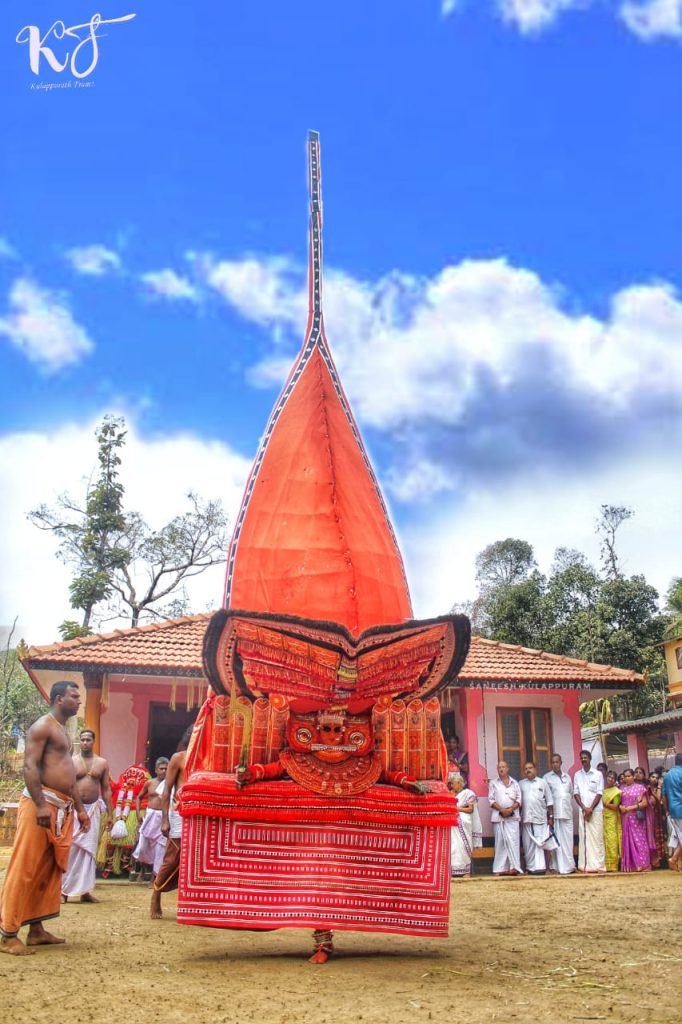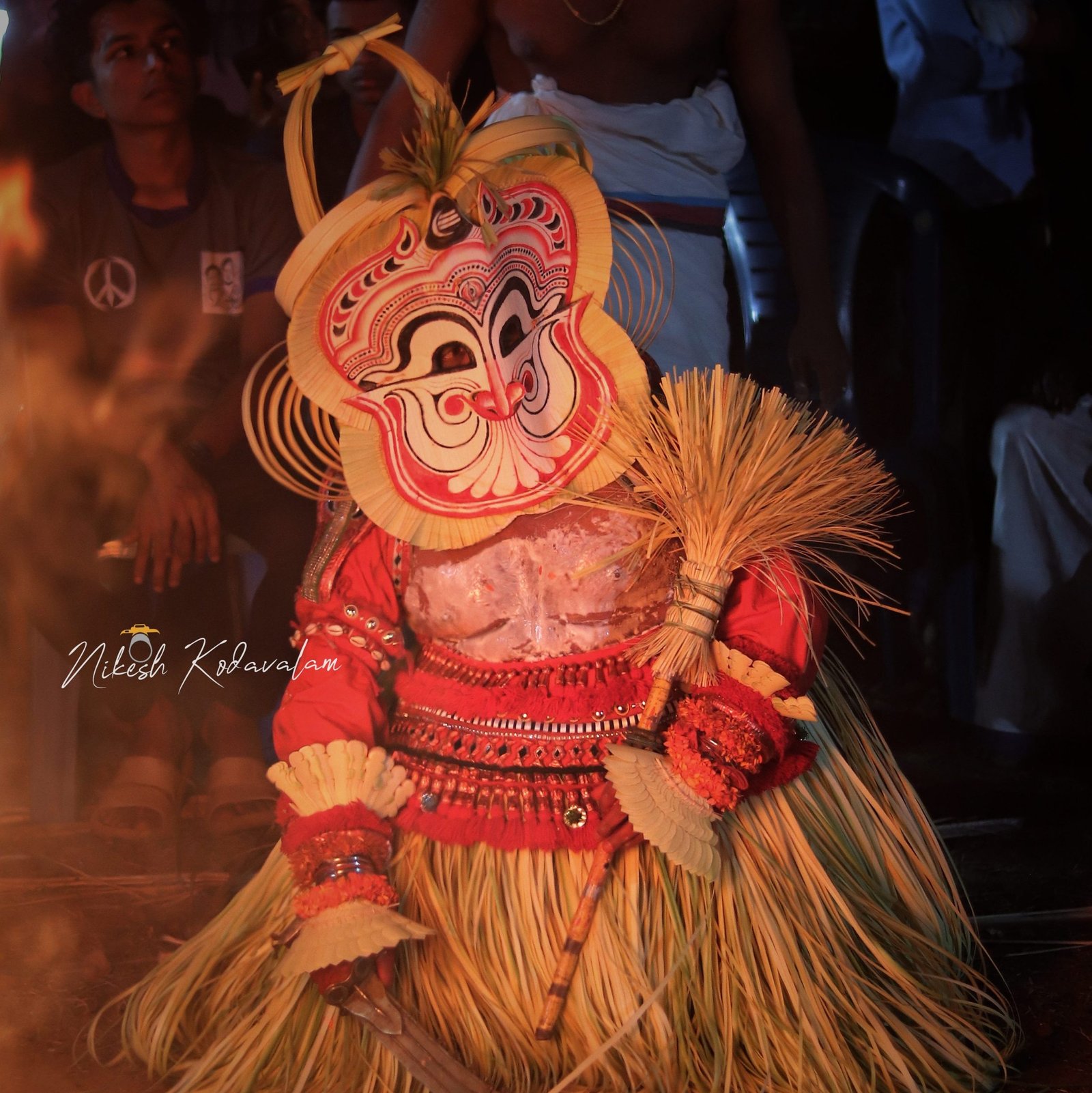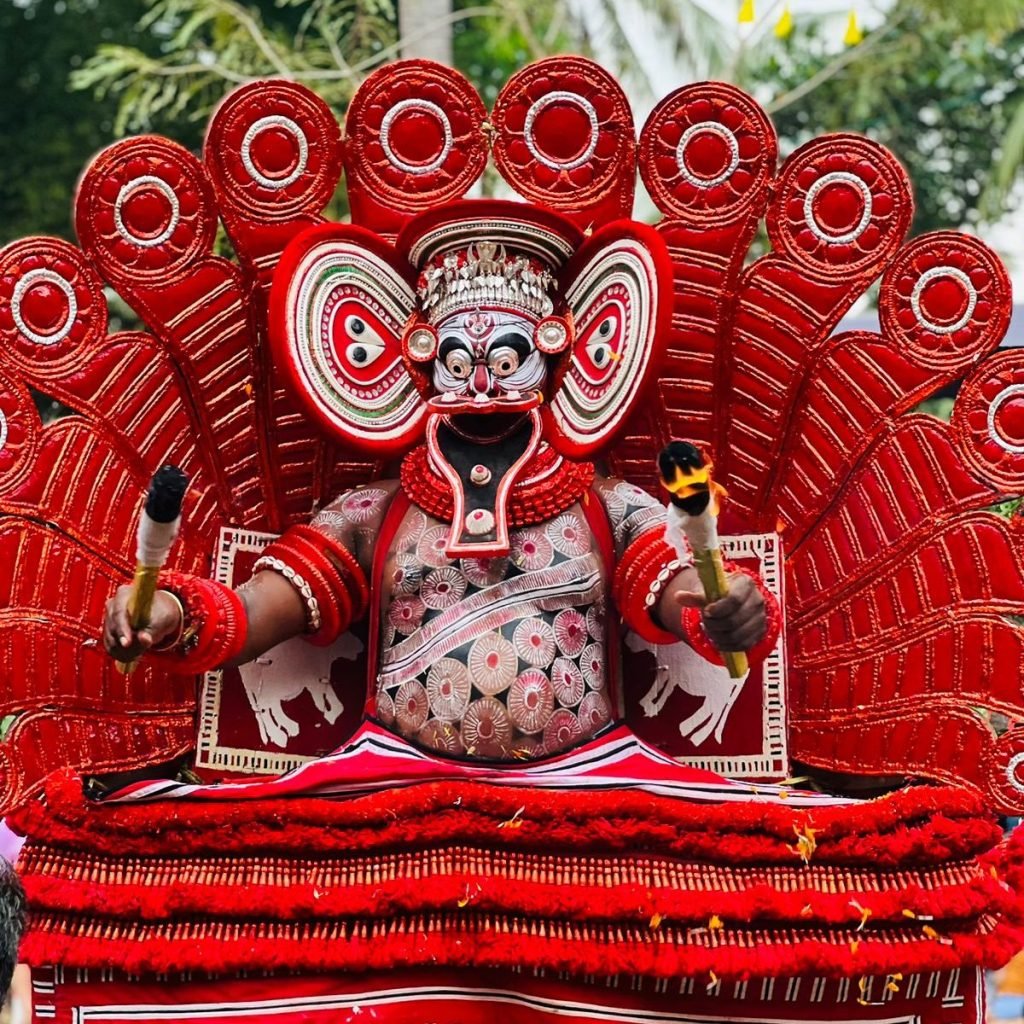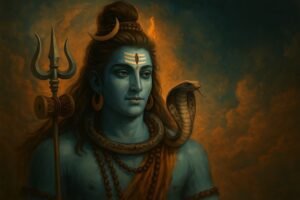Table of Contents
ToggleThai paradevatha Theyyam is a popular form of Theyyam ritual art that is performed in the northern part of Kerala, India. The word “Theyyam” is derived from the Malayalam language, which means “god” or “deity”. It is a form of worship that is unique to the region and is believed to have originated over a thousand years ago.
Thaiparadevatha Theyyam is one of the many forms of Theyyam that is performed during the months of January and February. It is performed to worship the goddess Thaiparadevatha, who is believed to be an incarnation of Kali, the Hindu goddess of destruction and creation.
The history of Thai Paradevatha Theyyam dates back to ancient times and is rooted in the religious and cultural traditions of the region. It is believed to have originated in the northern part of Kerala, which was once ruled by the Kolathunadu Kingdom. The kings of this kingdom were patrons of the arts and encouraged the development of various forms of cultural expression, including Theyyam.
According to local legends, the worship of Paradevatha, the goddess associated with Thai Paradevatha Theyyam, has been practiced for centuries in the region. The goddess is believed to have helped the people of the region in times of need, and her worship has become an important part of the local culture.
Today, it is a popular form of traditional art that is performed during festivals and other cultural events, and continues to be an important part of the cultural heritage of Kerala.
Story Of Thai Paradevatha Theyyam
According to legend, Thaiparadevatha Theyyam represents Badrakali, who was born along with Veerabadran from the hair of Lord Paramashiva. It is believed that Lord Paramashiva beat his hair on the ground in anger upon learning about the suicide of Sathi Devi, who had been insulted by her father Dakshan for not being invited to attend the Yaga. In response to this injustice, Veerabadran and Badrakali went to the Yaga shrine and destroyed it, setting it on fire and beheading King Daksha. Thaiparadevatha Theyyam is a cultural representation of this story and the worship of the deity is believed to offer blessings and protection to devotees.
After the incident at the Yaga shrine, Lord Shiva granted Badrakali a seat on the northern side of Mount Kailasa, near Rajathajalam. Badrakali was later reincarnated during the Devasura war, where she engaged in a fierce battle for seven days. On the eighth day, she defeated the powerful Asura Dharika, who possessed the strength of seven elephants. Badrakali beheaded Dharika and drank his blood, fulfilling the purpose of her avatar. Lord Shiva subsequently sent Badrakali to Earth to serve and protect its people.
When Badrakali arrived on Earth, Lord Shiva divided Kolathunadu into four parts and granted them to her. Thiruvarkadu (Madayikavu) was given to her in the North, Kalarivathukal in the South, Mamanikunnu in the East, and Cherukunnu Annapoornashwari Temple in the West. These regions were placed under the care and protection of Devi Badrakali.
Thai Paradevatha Theyyam Performance:
A Thai Paradevatha Theyyam performance typically begins with the application of makeup and donning of elaborate costumes, which can take several hours to complete. The performer then enters a trance-like state and begins to embody the goddess Paradevatha. The performance is accompanied by music and dance, and the performer may engage in various rituals and gestures to invoke the goddess and offer prayers.
The performance is usually held in a temple or other sacred space, and is attended by devotees and spectators. It is believed that the performance has the power to bring blessings and good fortune to those in attendance.
Conclusion
In conclusion, Thai Paradevatha Theyyam is a unique and fascinating form of traditional art and dance that is deeply rooted in the cultural and religious traditions of Kerala, India. For those who have the opportunity to witness a Thai Paradevatha Theyyam performance, it is an unforgettable and mesmerizing experience that showcases the beauty and richness of the local culture.
Read More Theyyam related Blogs











